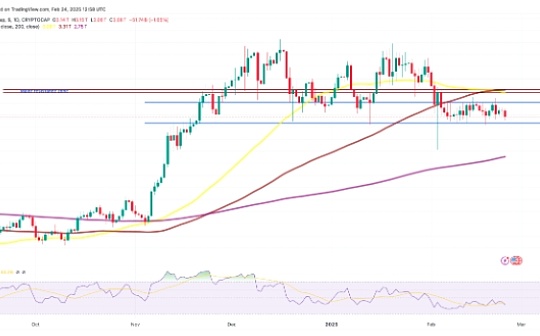The Origin of Solana: How Alameda and FTX bring SOL into the Abyss

Reprinted from jinse
02/25/2025·2MAuthor: Jeff Albus, Blockworks; Compilation: Baishui, Golden Finance
The first part of this article can be clicked on "The Origin of Solana: How to Turn Thoughts into Reality? 》
In 2021, Solana's ecosystem seems unstoppable as it expands at an astonishing rate. Funds are pouring into DeFi projects such as Serum, Raydium and Mango Markets. NFT markets such as Magic Eden began to compete with Ethereum competitors such as OpenSea, and the network's transaction volume reached an all-time high. But behind this rapid rise is a precarious dependency: Alameda Research and FTX.
Both companies were founded by now-jailed Sam Bankman-Fried (SBF), and were one of Solana’s earliest and most influential supporters. Alameda has participated in multiple rounds of financing and acquired a large number of SOL tokens. FTX hosted the Solana hackathon and played a key role in the launch and maintenance of Serum, a decentralized exchange and one of Solana’s flagship applications.
At first, deep entanglement with FTX was an indisputable advantage. Bankman- Fried, who was regarded as visionary at the time, became one of Solana 's most outspoken supporters, often touting its superiority to Ethereum. This partnership has helped Solana attract liquidity, developer and institutional credibility. However, this also means that Solana's fate is closely related to the success of FTX.
In November 2022, everything collapsed almost overnight. There are reports of $8 billion in FTX 's balance sheet, ostensibly due to the reckless financial behavior of Alameda and its founder SBF. Panic spread rapidly. FTX customers withdraw funds one after another, triggering an unbearable liquidity crisis on the exchange. Within a few days, both FTX and Alameda collapsed, taking billions of dollars in customer funds and razing Sam Bankman-Fried's empire.
The disaster is disastrous for the entire crypto industry, but no blockchain suffers more than Solana. Investors feared that the collapse would spread further and sold their assets. The price of SOL has dropped sharply from its all-time high of nearly $250 a year ago. While bear markets were the main cause of this decline, the collapse of FTX caused its price to fall further to around $9.77.
DeFi activity on the Internet is immediately exhausted. Serum, which relies on FTX operations, collapsed and traders had to look around for alternatives. The broader Web3 community has already skeptical of Solana's stability, as it has had network outages in the past, now called it "Sam's Chain", a blockchain that is too close to the sun and is now destined to Gradually fade out of people's sight. Still, the collapse didn’t last as long as some expected. Solana rebounded to above $20-24 in the following weeks, although its price remained in a long-term sideways stagnation for most of the following year.
Psychological blows may be more serious than financial losses. Developers who built the project on Solana questioned whether the network would survive. Venture capital firms that once longed to fund Solana startups have retreated, shifting their focus to Ethereum and L2 promises. But even if the walls are closed, Solana’s loyal core community is firmly refusing to surrender. A small number of loyal creators, validators and users believe that the technology itself is reliable and they insist on continuing to build and promote it. But is their belief alone enough?
Preview of the content of the next article of the Solana series of articles: Make a comeback. How Solana overcomes difficulties, reborn from the ashes, and regain the status of Web3 powerhouse.


 chaincatcher
chaincatcher

 panewslab
panewslab